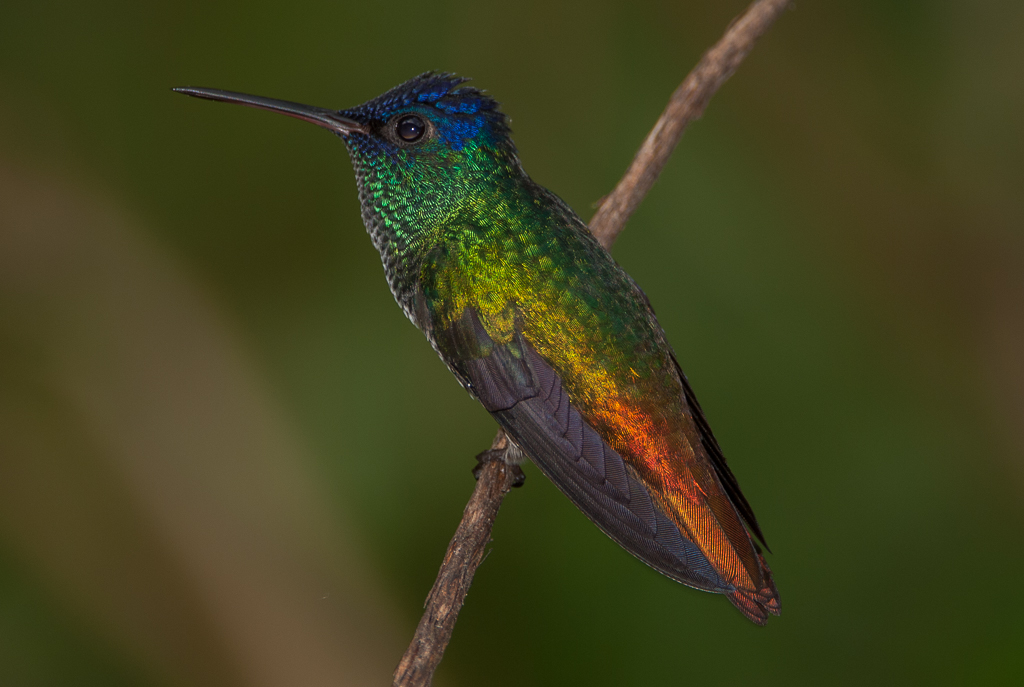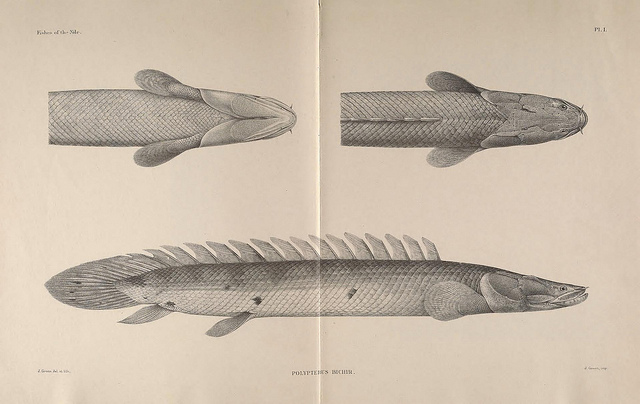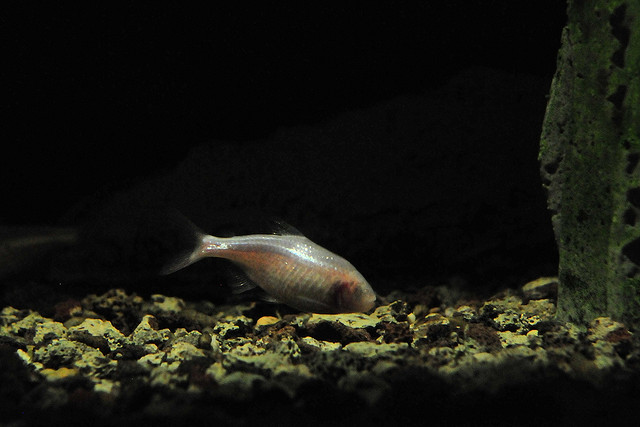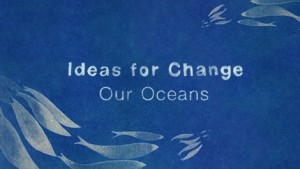Search Results for Tag: fish
WWF: We just halved the world’s vertebrate population

It’s not only the world’s population of
birds that has dropped massively over the last 40 years. Photo: Rob Williams
Humankind needs to rethink its way of living and consuming the world’s resources immediately. That’s the bottom line of the latest Living Planet Index, presented by the World Wildlife Fund today in Berlin. Over just four decades we managed to reduce the size of the world’s populations of fish, birds, mammals, amphibians and reptiles by 52 percent. That’s a lot faster than previously thought, according to the WWF.
The report that is published every two years also says that our demands at the moment are 50 percent above what nature can bear. We cut down too many trees, use too much fresh water and emit carbon dioxide at an unsustainable rate.
The biggest declines of vertebrate wildlife was found in tropical regions, especially Latin America, the report finds. The dramatic numbers result from a change in the available information that went into the report. Two years ago the WWF talked about a decline of 28 percent in the time period from the 1970s until 2008, because the report relied on readily available information mostly from North America and Europe. Today the Living Planet Index is based on trends from around the world in a total of 10,380 populations of 3,038 mammal, bird, reptile, amphibian and fish species.
The main reasons for the massive decline are clear, states the report: the loss of natural habitats, overexploitation through hunting or fishing and climate change.
However, WWF International Director General Marco Lambertini strikes a hopeful note: it’s not too late to “develop sustainably and create a future where people can live and prosper in harmony with nature.”
Bichirs: The fish that walk on land

Illustration of a Bichir out of “The fishes of the Nile”, CC BY 2.0 via Biodiversity Heritage Library /flickr.com
The fish on the picture on top is a bichir, and it belongs to a fish order quite fascinating for researchers. Especially one representative of the bichirs, that goes by the name of Senegal bichir or “dinosaur eel”, was of special interest lately. The fish of the order of the Polypteriformes (meaning it has lots of fins) has not only lungs and gills, but also ossified, strong pectoral fins, to occasionally walk on land.
The ability to walk and breathe air led to an experiement, when researchers of the McGill University in Canada raised the dinosaur eels for eight months — on land. Of course they had to take care that the fishes won’t dry out. But because they move on land from pond to pond the fishes were kind of used to the situation.
The experimental arrangement consisted of a mesh and enough water for the fishes to stay in normal shape, but also too little water to just swim. The researchers also formed a control group using 38 fish growing up in their usual aquatic environment. The results of the research illustrate very clearly the changes that might have enabled fins to become limbs when some fish decided to trade water for land, around 400 million years ago. And that was, as we all would have to admit, a big step that would help the rise to tetrapods, including almost all land vertebrates from amphibians to mammals.
And the fish walk looks like this, do you see conformities in style to, let’s say, humans?
Ever hear of evolution ‘in reverse’?
How do you understand the term “evolution?” It’s synonymous with progress, development, advancement, right? But, sometimes evolution can also change direction.

Astyanax Mexicanus, a blind cavefish. Photo credit: CC BY-NC-SA 2.0 by Joachim S. Müller/flickr.com: http://bit.ly/1kcBaoO
Evolution is usually associated with developing new features to be able to adapt to environmental changes in certain regions. But, sometimes evolution can also go the other way. Called “regressive evolution,” the phenomenon describes nothing else but advancing in evolution by losing certain abilities or traits.
Cave-dwelling species, in particular, are affected by regressive evolution. These species have originally lived above ground and later, by geological events, were trapped below the earth’s surface. A very drastic example is Astyanax mexicanus, a blind and almost colourless, transparent fish species living in Mexican caves. It has a surface-dwelling counterpart that looks very much the same, just add a silverish color and, well, eyes. Both are the same species and are able to interbreed. In fact, the cavefish have eyes as embryos, but they never become fully developed. Instead of eyes, cavefish navigate with a tool that all fish have, a sensory system. But compared to thir overground counterparts, the blind fish system is about 50 times more effective.
It’s possible to find other examples in different habitats. Cimicidae (article in german), for example, have lost their ability to fly by regressing their wings during evolution. This also applies for lice (article in german). Snakes ran around on legs and feet a few million years ago, terrestrial vertebrates once had gills. And here’s another example we all know very well: humans. We lost our proud, ape-like tails during the process of evolution.
Do you see that as a loss? 🙂
Make a promise, help save the oceans
 What can you promise yourself that will in some way help protect the world’s oceans? That’s the question today, on World Oceans Day. It’s an event meant to honor what is one of the world’s main protein sources – the oceans. We definitely need to save our ‘blue gold’. In 2011 alone, 131 million tons of fish ended up on dinner plates worldwide.
What can you promise yourself that will in some way help protect the world’s oceans? That’s the question today, on World Oceans Day. It’s an event meant to honor what is one of the world’s main protein sources – the oceans. We definitely need to save our ‘blue gold’. In 2011 alone, 131 million tons of fish ended up on dinner plates worldwide.
To celebrate this year’s event, the World Economic Forum (WEF) has released a short animated film narrated by American oceanographer Sylvia Earle. “The world is blue,“ she says. The message is clear – all of us need to take better care of the world’s oceans and stop using them as dumping grounds for garbage. We also need to stop overfishing them and drilling into the ocean floor in the hunt for oil.
If you want to get a glimpse at what the future of the world’s oceans might look like, the WEF has also released an infographic. It’s definitely worth a click.
World Oceans Day had been unofficially celebrated since 1992 and was officially recognized by the United Nations in 2008. Ever since, the day has a special theme each year. This year, the event’s organizers want you to make a promise to change one thing in your lives that will help protect the ocean. The idea is to upload a photo of the promise to social media plattforms – make sure you mention #WorldOceansDay.
Growing rice + fishing

A new study out of China has some encouraging news for farmers and the environment: according to the six-year long report from the National Academy of Science in China, rice cultivation and fishing can take place side-by-side in the same place!
In the study, fish were allowed to swim in flooded paddies at the same time as farmers were cultivating rice. Over time, researchers found out the farmers grew the same amount of rice as usual but cut down drastically on the amount of pesticide and fertilizer they normally use. Fewer chemicals in the paddies means a lower environmental impact. Plus, one of the study’s authors says areas that don’t have enough water and land for rice and fish production can combine the two and benefit everyone. You can read more about the study on the Science and Development Network.








Feedback